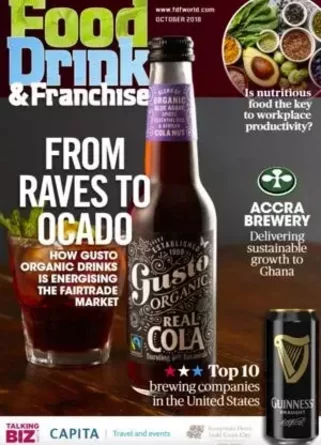The Institute of Food Technologists announces its Top 10 food trends for 2015

We always love seeing what various food industry experts have to say about the hottest and most important food trends that we should be taking care to follow—it’s imperative for food producers to know which trends they should consider implementing in their new products, and it’s vital for retailers to know which trends to stock and which short-lived fads to pass up.
In preparation for the trends that will be on display at the technology and innovation-centered IFT15 conference and food expo, contributing editor A. Elizabeth Sloan discussed her picks for the Top 10 Food Trends of 2015 in the most recent issue of the IFT’s Food Technology magazine. So what does Sloan see as the most representative trends of the year so far?
10. Diet Watching
According to Sloan, more than half of all U.S. households (55 percent) and U.S. adults for that matter (53 percent) admit to watching their diet, whether it’s for specific medical reasons, because of food allergies and intolerances, or simply to maintain or lose weight. This trend has consumers looking out for low-sugar and low-calorie foods, along with vitamin-fortified functional foods and nutrition bars and shakes that can serve as meal replacements.
9. “‘Cook-Less’ Meals”
“More than a quarter (28%) of consumers say that they are preparing more meals in less than 20 minutes than they did five years ago,” says Sloan, reporting that ready meals and home-baking meals like take-and-bake pizzas are a rising trend. Consumers are also combining this trend with others like nutritious healthy meals and a heightened interest in ethnic cuisines, preferring stir fried meals over fried foods and preparing Mexican and Asian-inspired meals from packages and kits more frequently. Companies like Nestlé are capitalizing from marketing frozen ready meals as higher in nutrition and health value than TV dinners of the past.
8. Whole Food Nutrition
Consumers don’t always want their nutrients delivered piecemeal through supplements: they also want the benefits afforded by whole foods. “When ingredients that deliver healthy whole food nutrition match up with cutting-edge culinary trends, the results are explosive,” says Sloan. “Yet few marketers seem to be taking advantage of the added nutritional benefits when featuring fruits, vegetables, grains, nuts, legumes, or seeds.” Interest in fruits and vegetables is rising, with businesses like Jamba Juice benefitting from consumer desires for more fresh produce in their meals.
What else is trending? Check out the full article for a comprehensive rundown of what’s hot in 2015.
[SOURCE: IFT]



